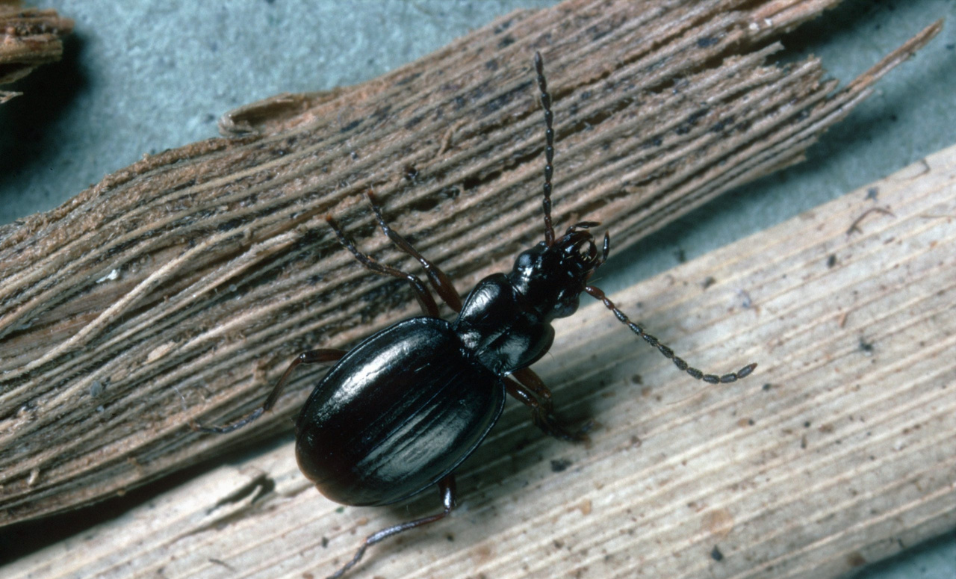Invasive insects are a clear but variable threat to biodiversity

Introduced ground beetle Trechisibus antarcticus on South Georgia Island. Credit: Pete Bucktrout. Source: British Antarctic Survey

South Georgia Island. Credit: Graham Meyer Source: Unsplash

Introduced ground beetle Merizodus soledadinus on South Georgia Island. Credit: Roger S. Key
The study by SAEF scientists, Dr David Clarke and Professor Melodie McGeoch from LaTrobe University, represents the largest effort to date to quantify the impact of invasive insects.
“Invasive insects are a significant threat to biodiversity worldwide, but we lack data to fully understand the issue,” said Dr David Clarke, the lead author of the paper published in Current Research in Insect Science.
“Environmental impact assessments are a useful method for synthesising available evidence and quantifying environmental impact. Subsequently, it also helps identify gaps in our knowledge.”
“A key finding from this research is evidence of a relationship between range size and impact severity, where the more widespread an invasive insect is in its introduced range the more likely it is to have a severe environmental impact.”
The team performed environmental impact assessments to classify the severity and type of impact the invasive insects were having at national and global scales. They then used the information to test four hypotheses.
Seeking to understand the bias in the available data, the team correctly predicted that understanding of environmental impacts was skewed by more research on some species than others.
Impact data was available for only one third of invasive insects assessed and was mostly produced in North America and Australia.
The team also predicted that invasive insects with a socioeconomic impact would be studied to a greater extent, but found this was only marginally the case.
By testing hypotheses on the links between geographical area and impact, the results showed that the more widespread an insect is in its introduced range the more likely it is to have a severe environmental impact.
Finally, islands have long been considered more susceptible to severe impacts from invasions, but the results showed that in the case of insects islands were no more likely to suffer from harmful impacts than mainland locations.
Looking to the Antarctic region, the team used a recently compiled dataset to assess the global impact of 20 invasive insects found on the sub-Antarctic islands.
Co-author, Professor Melodie McGeoch said despite 60% of the invasive species being data deficient, six of these species introduced to parts of the sub-Antarctic were identified as having negative impacts globally.
“These six species are found across 10 different sub-Antarctic locations, but few have been closely examined,” Professor McGeoch explains.
“However in four of the six species, they were found to have a major negative impact on the sub-Antarctic island environment. This was due to the species preying on or competing with native species, and by feeding on native plants.”
Two of these six invaders, both carnivorous ground beetles in the family Carabidae, were classified as having moderate to major environmental impacts around the globe.
One of these invading beetles, the Merizodus soledadinus, is one of only 28 insect species found to have evidence of a major impact globally, which means it has caused the local extinction of a native species where it has been introduced. Its establishment on Kerguelen Island coincided with the loss of a native plant-feeding beetle.
The other beetle, Trechisibus antarcticus, which has invaded South Georgia Island is also having negative impacts on the population size of native species.
Professor McGeoch said a more strategic approach to collecting and synthesising data is needed, particularly because the environmental impact is not the same across introduced regions.
“Considering the potential harm these insects pose, the impacts of invasive insects on sub-Antarctic ecosystems and ecosystems more broadly, need to be examined more closely and thoroughly to assess the level and extent of harm they may be having.”
About the author
Anna Quinn
Anna is SAEF’s the Senior Communications Adviser.